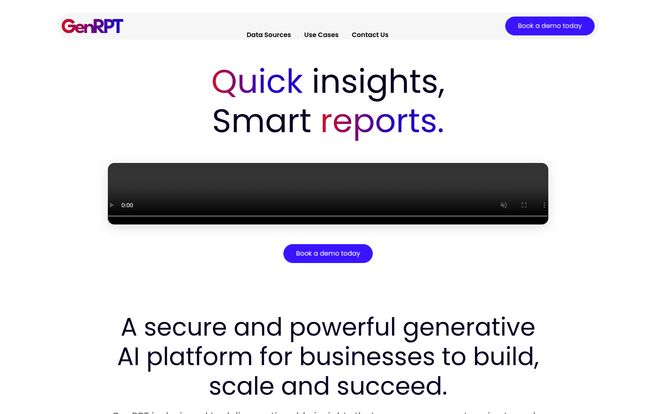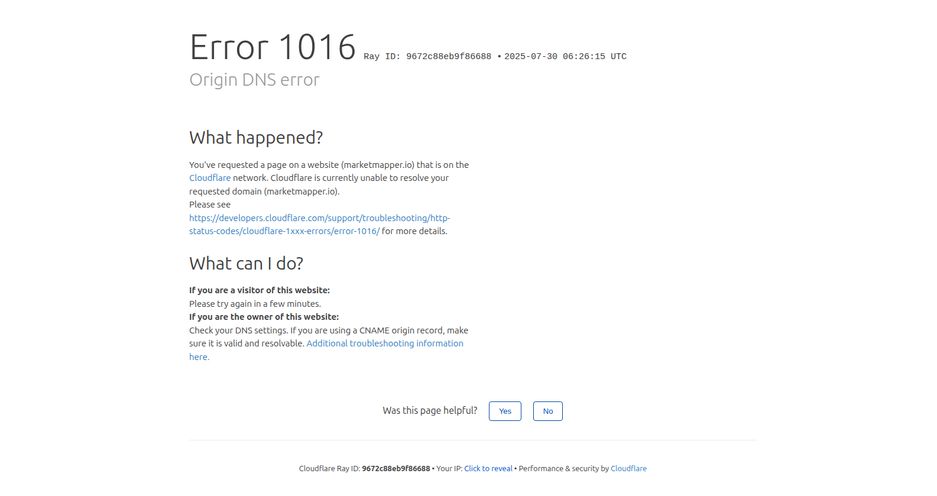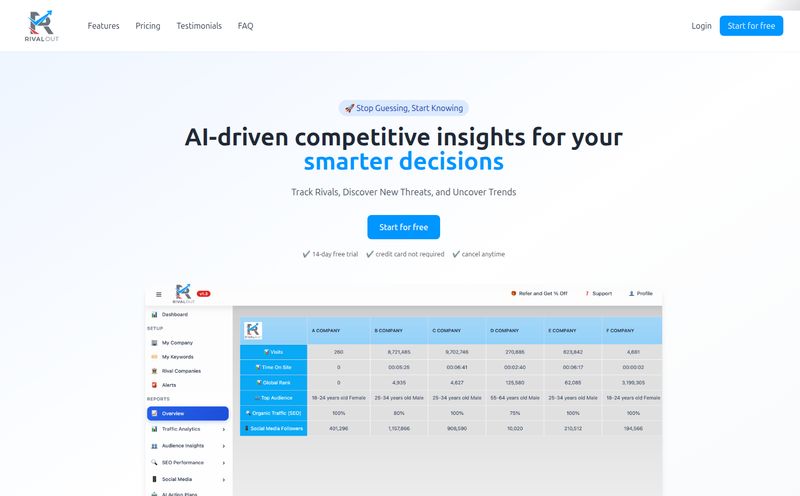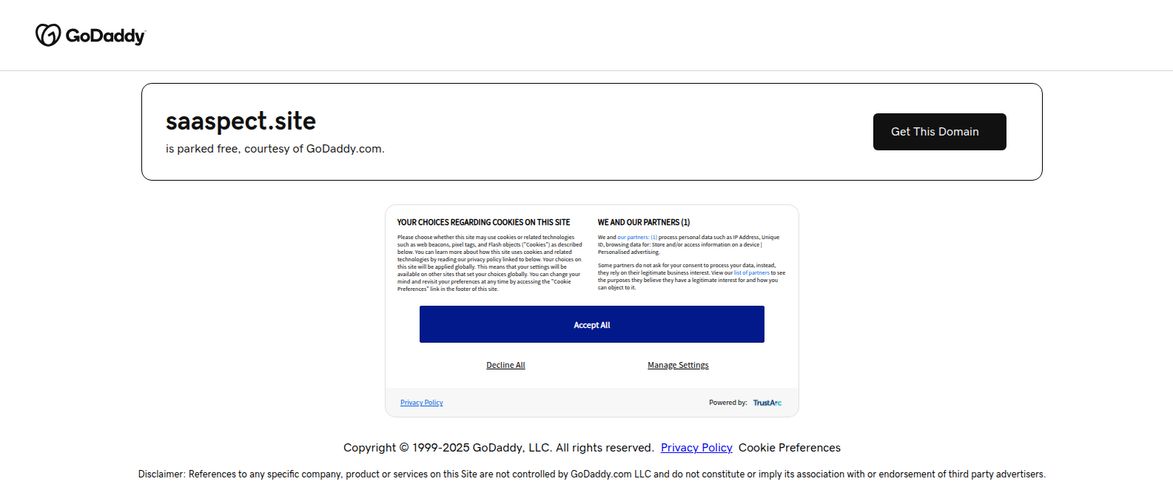For years, we've all been sitting on mountains of data. Piles and piles of it. In our SQL databases, our CRMs, and don't even get me started on the labyrinth of Excel sheets and the fifty-page PDF reports that get emailed around. We've been told this data is gold. The key to everything. But for most teams, it’s more like a locked treasure chest where the key is written in a language only developers and data scientists can speak.
I’ve spent more years than I care to admit in the SEO and traffic game, and the story is always the same. Marketing has data, sales has data, ops has data... and none of them can easily ask it a simple question. We're either flooding the dev queue with requests for custom reports or just giving up and making decisions on gut feelings. Not ideal.
Then along comes the great generative AI tidal wave of the 2020s. Suddenly, AI is everywhere, and now it's knocking on the door of business intelligence. I’ve seen a few tools pop up, and recently, GenRPT caught my eye. It makes a bold promise: “Quick insights, Smart reports.” The idea is simple, you talk to your data in plain English. Sounds like a dream, right? So, I decided to take a closer look.
So, What Exactly is GenRPT Trying to Do?
Think of GenRPT as a universal translator for your company's data. Its whole purpose is to bridge that scary chasm between your business teams (the people who need the answers) and your complex data sources (the places where the answers are hiding). Instead of writing a complicated SQL query, you can just ask, “What were our top-selling products in the Northeast last quarter?” and it supposedly spits out a chart.
This isn't just about making things easier; it's about making data accessible. Instantly. It's an attempt to turn a monologue—where the data just sits there—into a dialogue. And for a business, that changes everything.
The Data Sources It Plays Nice With
A tool like this is only as good as the things it can connect to. You can have the slickest interface in the world, but if it can't read your data, it's just a pretty dashboard. GenRPT seems to understand this and covers the big three that most businesses rely on.
Taming the SQL Beast
For any company with a bit of technical backbone, their most valuable data lives in a SQL database. GenRPT claims to seamlessly hook into heavy hitters like PostgreSQL, MongoDB, Snowflake, and MySQL. This is the core of its power. The platform is designed to take your plain-English question, translate it into the specific SQL dialect needed, run the query, and then present the findings back to you in a human-readable format. If it works as advertised, that's a whole lot of saved time and fewer frantic Slack messages to your engineering team.
Unlocking Secrets from PDFs and Excel Sheets
Okay, this is the part that really got my attention. Because let's be honest, half the business world still runs on Excel. And those long, dense PDF reports? The bane of my existence. I once had to manually pull competitor data from a 120-page market analysis PDF. It took two days and a lot of coffee.
GenRPT says it can ingest these unstructured documents. It can take a multi-page PDF—think Standard Operating Procedures (SOPs), financial circulars, or research papers—and summarize the key points. It can also connect to your Excel spreadsheets to help you spot trends you might have missed. This is huge. It moves beyond just structured database queries into the messy, real-world documents we all deal with every single day. A genuinely big deal, if you ask me.

Visit GenRPT
Who is This Actually For? Real-World Use Cases
The website specifically calls out a few industries, which gives us a clue about their target audience.
- BFSI (Banking, Financial Services, and Insurance): This makes total sense. This sector is all about precision, compliance, and rapid decision-making. Being able to quickly query transaction data for anomalies or analyze market trends without a 24-hour reporting lag is critical.
- Logistics: Another no-brainer. Imagine a logistics manager asking, “Which of our delivery routes are consistently experiencing delays?” or “Show me our fuel costs by region for the last month.” Getting those answers in real-time could lead to immediate optimizations that save thousands of dollars.
- Other Industries: The site also mentions healthcare and retail. I can easily see the applications. A retail manager could analyze foot traffic vs. sales data. A healthcare administrator could look at patient admission trends to manage staffing. As a marketer, I'm already thinking about connecting it to campaign performance data to get insights that Google Analytics alone doesn't provide.
My Honest Take: The Good and The... Murky
No tool is perfect, and as an old hand in this industry, I'm naturally skeptical. After digging around, here’s my breakdown of the good and the parts that give me pause.
First, the good stuff. The biggest advantage is obviously empowering non-technical users. Giving your marketing, sales, and operations teams the ability to self-serve their own data needs is a culture-shifter. It fosters curiosity and can lead to smarter, faster decisions. The promise of real-time charts and reports is also a massive step up from the stale, weekly exports many of us are used to. Combining data from SQL, PDFs, and Excel into one conversational interface? That's the dream of a unified data view.
However, there are some question marks. The biggest one for me? I went looking for a pricing page and was met with a stark "Not Found" error. Oof. More on that in a second. Also, while the idea of connecting data sources sounds easy, it rarely is. There will be an initial setup phase, and the effectiveness of the whole platform hinges on how clean and well-structured your source data is. It's the classic "garbage in, garbage out" problem. GenRPT can't magically fix a messy database; it can only give you a better way to look at the mess.
The Big Elephant in the Room: The Price Tag
Let's circle back to that missing pricing page. In the world of SaaS, a lack of public pricing usually means one thing: it's expensive. This is typically a sign of an enterprise-focused, "contact us for a quote" sales model. The prominent "Book a demo today" button confirms this.
There's nothing wrong with this model, but it can be a barrier for small to medium-sized businesses who just want to know if they can even afford to get in the door. It signals that you're not just buying a tool; you're entering a sales process. Be prepared for a conversation about your company's size, data volume, and specific needs, which will all factor into a custom quote.
Frequently Asked Questions about GenRPT
Do I need to know how to code to use GenRPT?
Absolutely not. That’s the entire point of the platform. It’s built to understand natural, plain-English questions, so you can interact with your data without writing a single line of SQL.
What kind of data can I connect to GenRPT?
GenRPT connects to the three main types of data sources for most businesses: SQL databases (like PostgreSQL, MySQL, etc.), unstructured PDF documents, and of course, Excel spreadsheets.
Is GenRPT secure for sensitive business data?
The website states it's a "secure and powerful generative AI platform." However, with any new tool that handles sensitive information, you should absolutely dig into their specific security protocols and compliance certifications during the demo process. Always do your due diligence!
How much does GenRPT cost?
This is the million-dollar question. The pricing is not publicly listed on their website. To get a quote, you need to book a demo with their sales team. Expect pricing to be customized based on your company's needs.
Is GenRPT a replacement for tools like Tableau or Power BI?
It's less of a replacement and more of a different approach. Traditional BI tools like Tableau are incredibly powerful for creating complex, customized dashboards, but they often require significant training. GenRPT focuses on speed and accessibility through conversational queries, which might be better for teams that need quick answers without deep technical expertise.
How does it handle messy or poorly structured data?
Like any data tool, its output is highly dependent on the quality of the input. While it can make sense of various formats, its insights will be most powerful and accurate when connected to clean, well-organized data sources. It’s a powerful lens, not a magic wand.
Final Thoughts: Is It Worth Booking That Demo?
So, where does that leave us? GenRPT is tapping into a very real, very widespread pain point in the business world. The idea of democratizing data analysis with a simple, conversational AI is incredibly appealing. For companies that feel like they're data-rich but insight-poor, it presents a compelling solution.
It’s not a silver bullet—you still need quality data to get quality answers. And the opaque pricing model means it's likely targeting companies with a decent budget. But if your team is constantly bottlenecked by a lack of data-savvy personnel, and you're tired of making decisions in the dark, then GenRPT is definitely a player to watch.
My advice? If you're intrigued, it's probably worth booking that demo. Go in with a clear use case and some tough questions. It might just be the tool that finally helps you have a proper conversation with your data.
Reference and Sources
- GenRPT Official Website (Information sourced from the provided landing page)
- Contact Information: [email protected]



